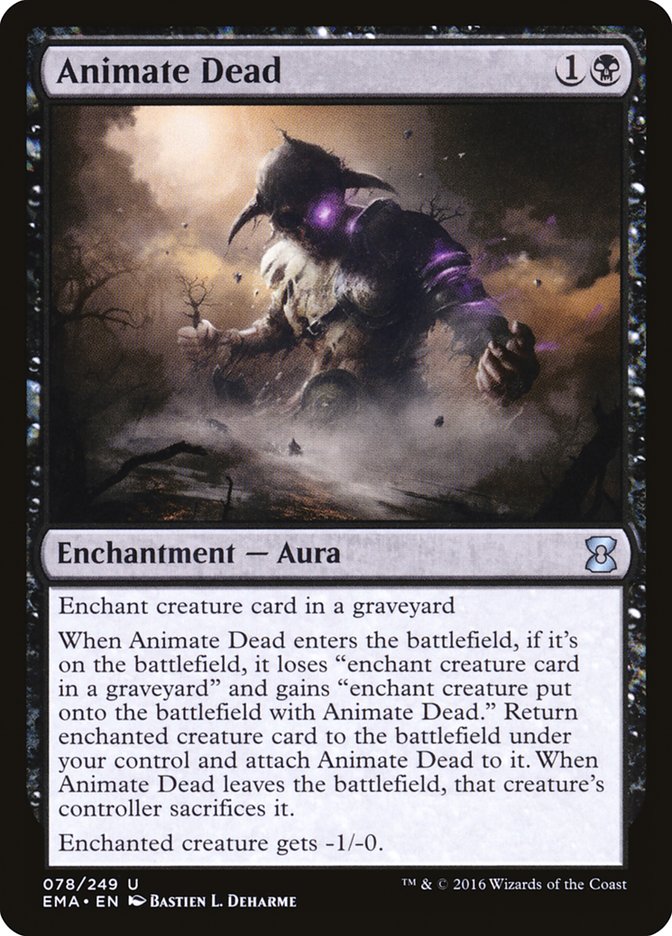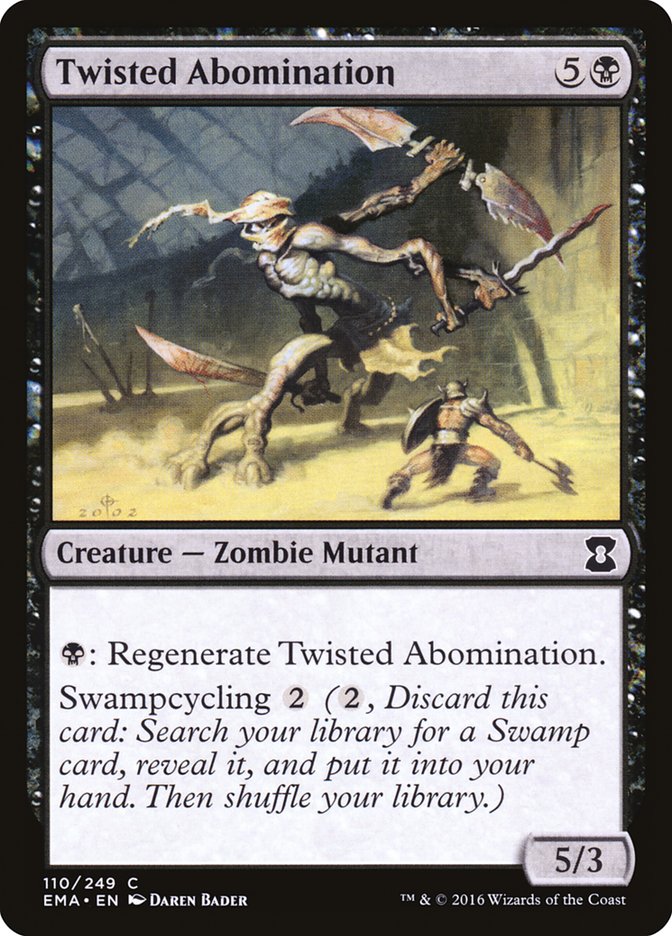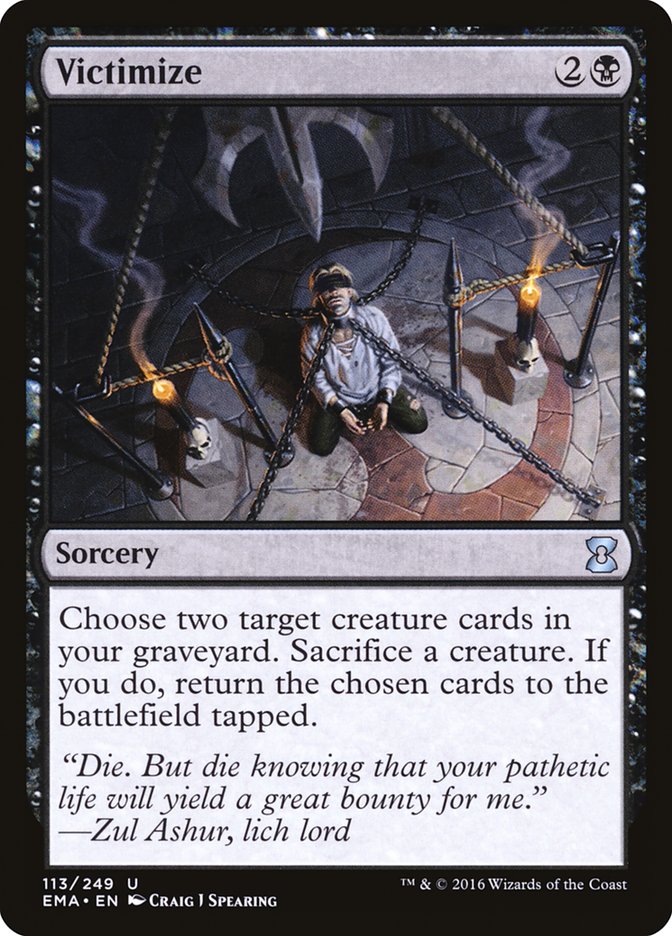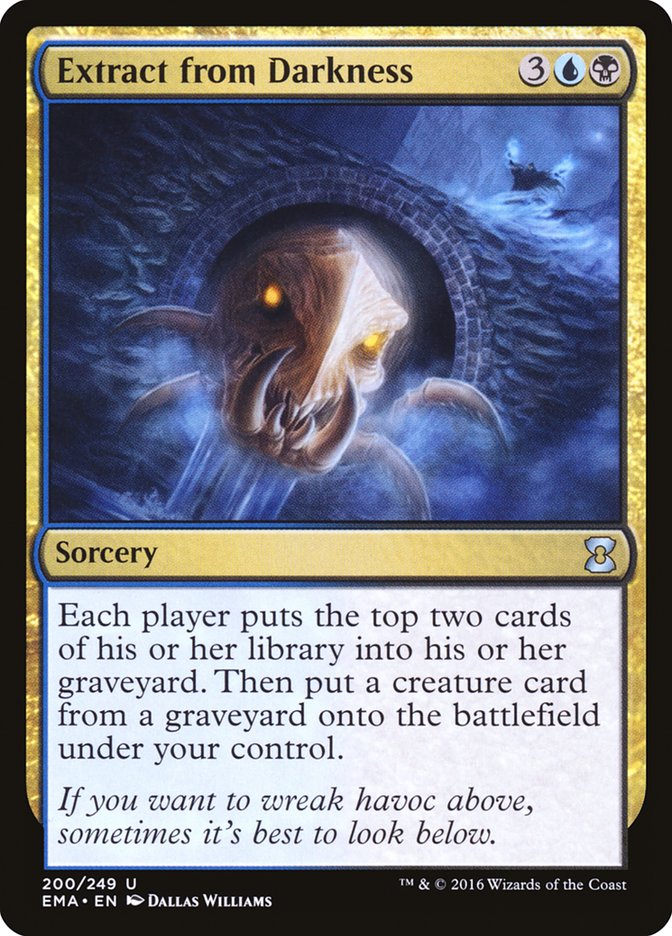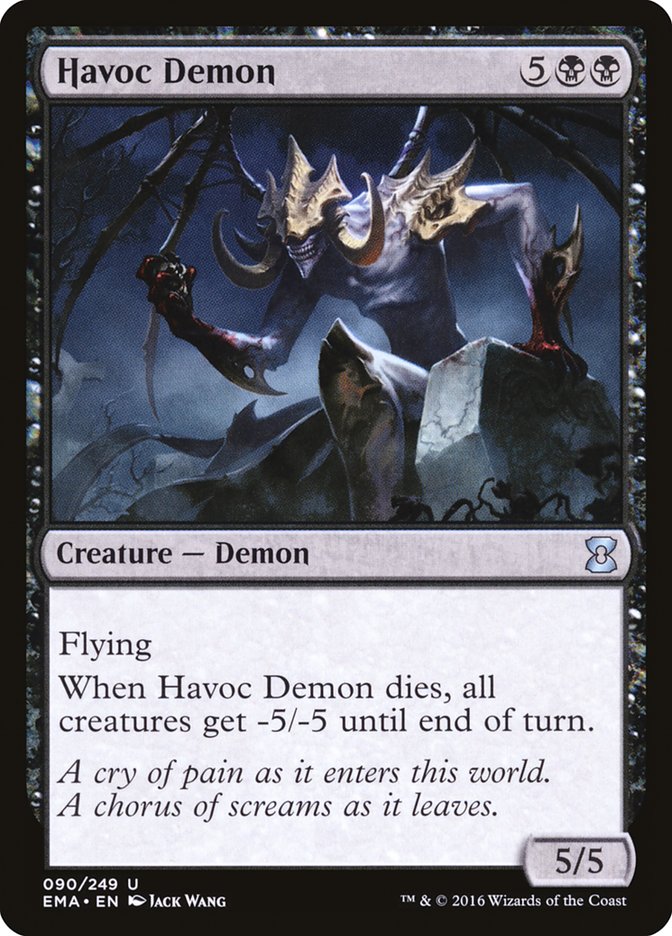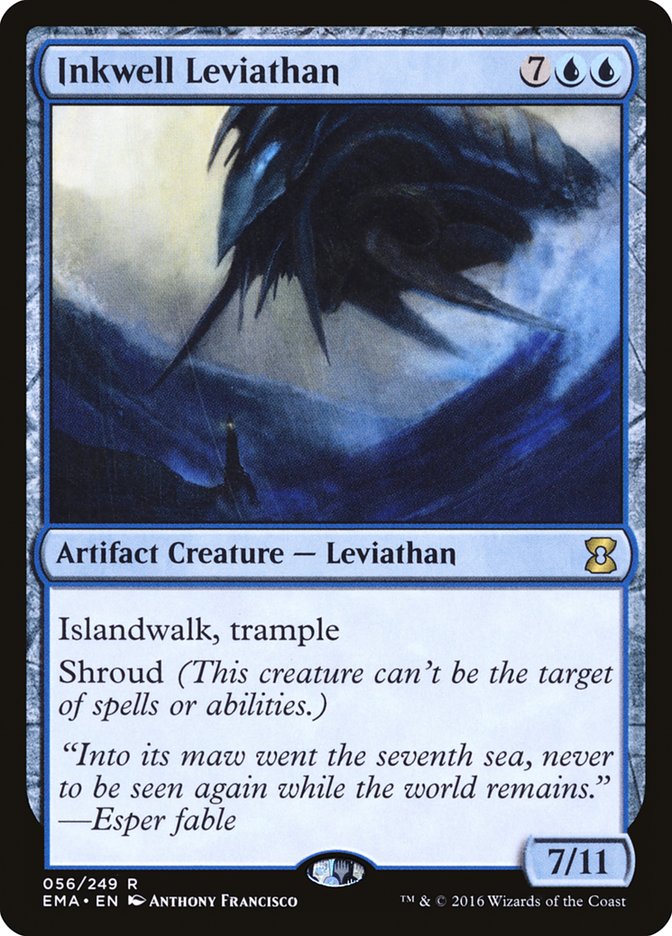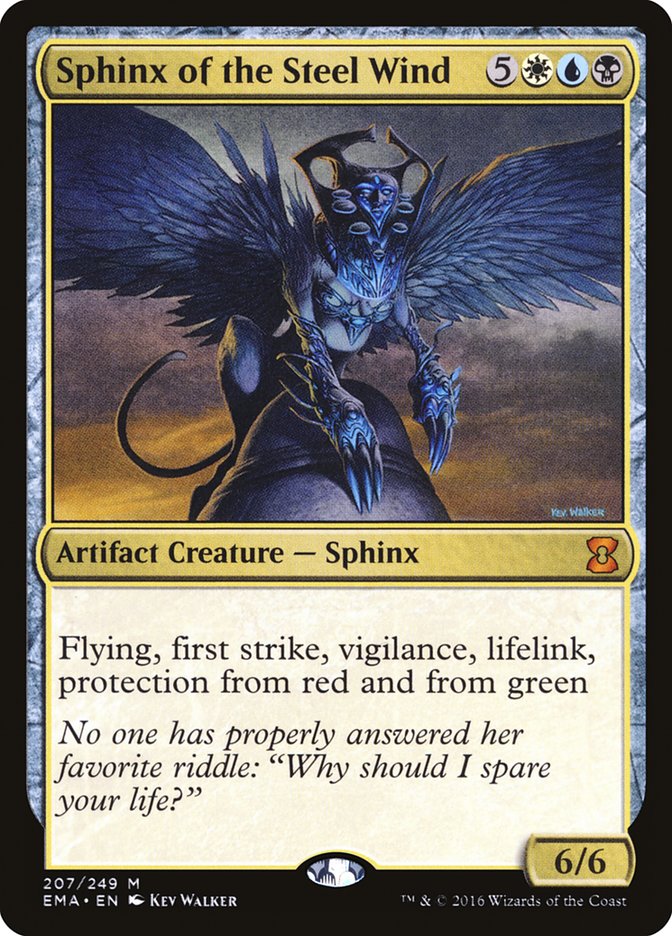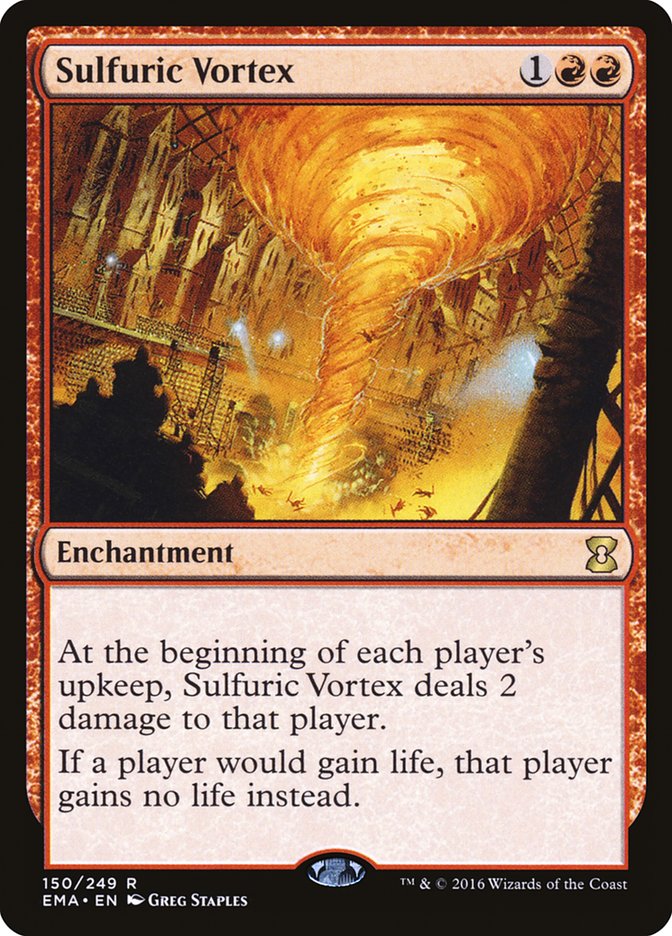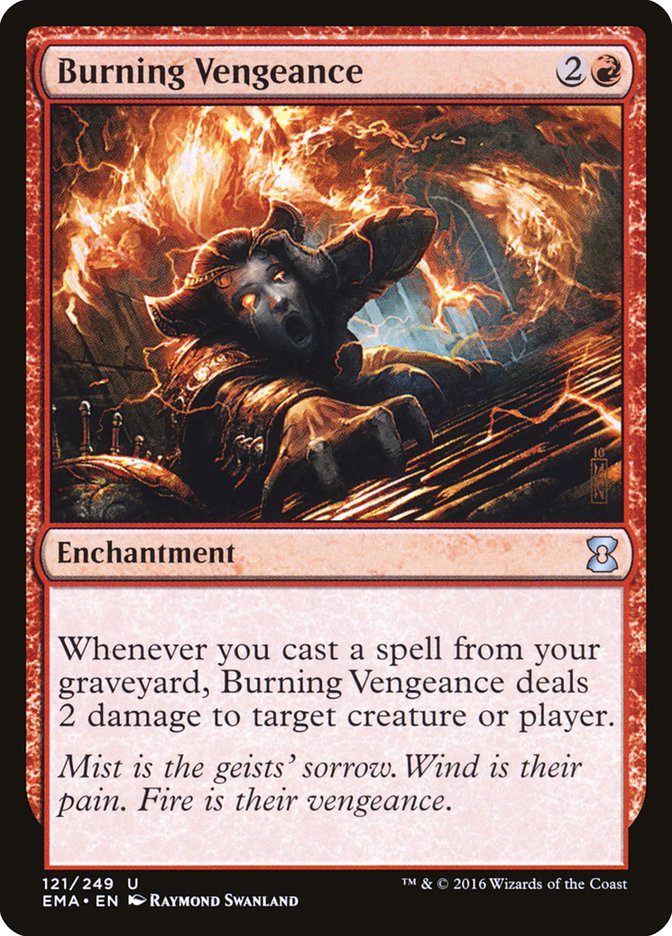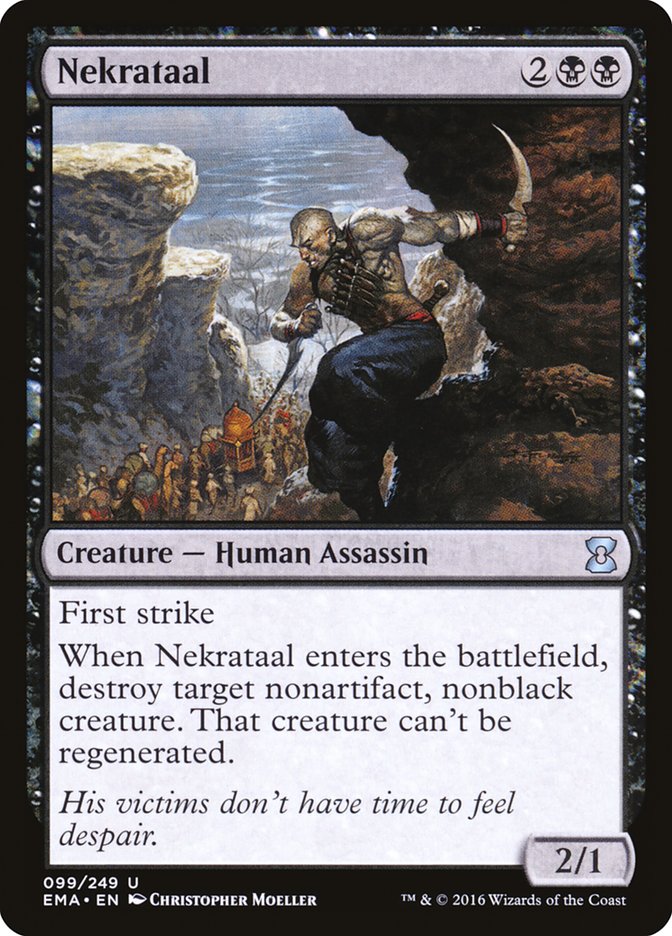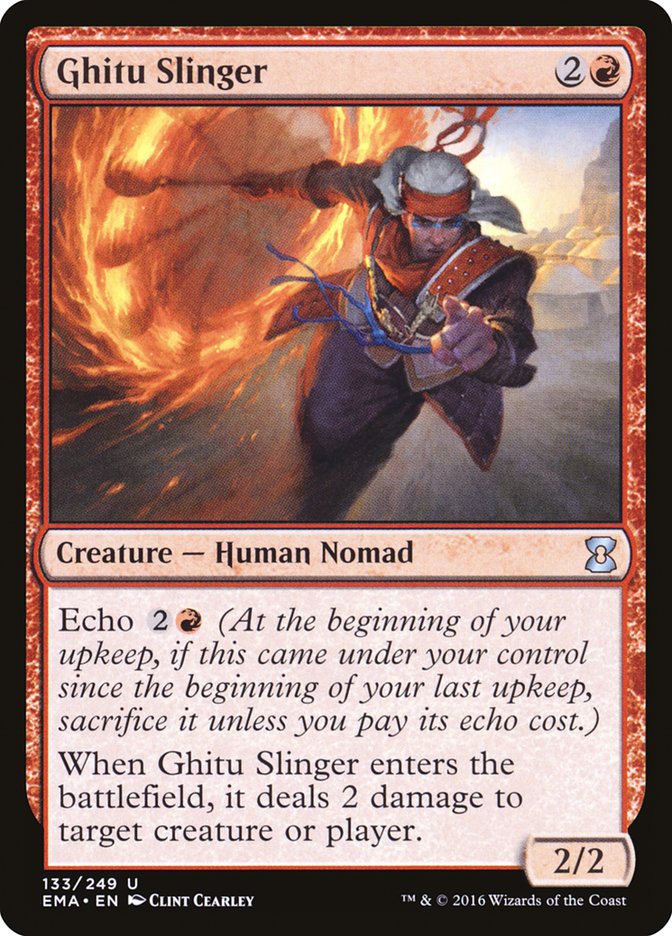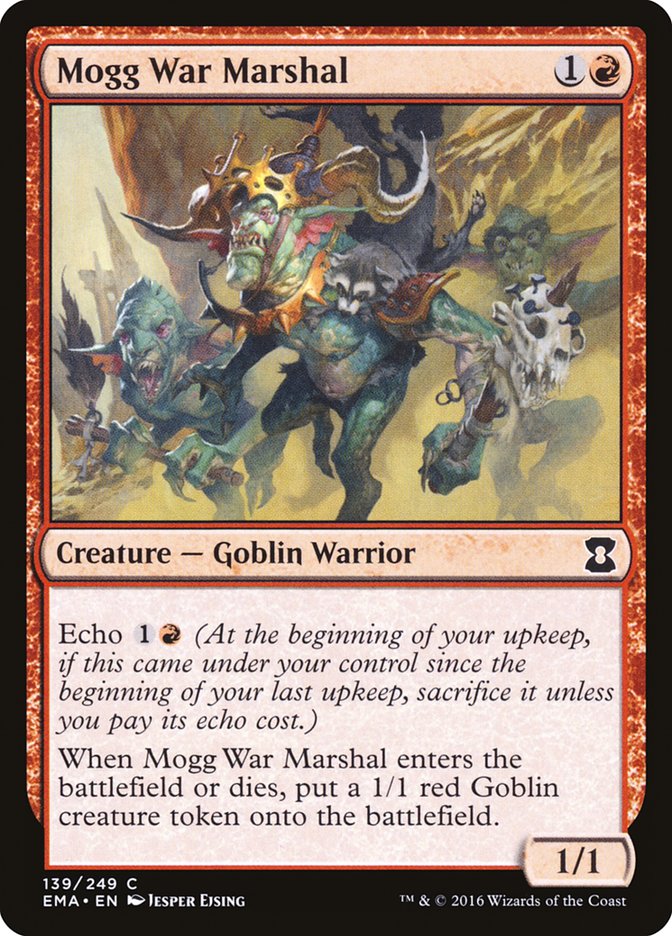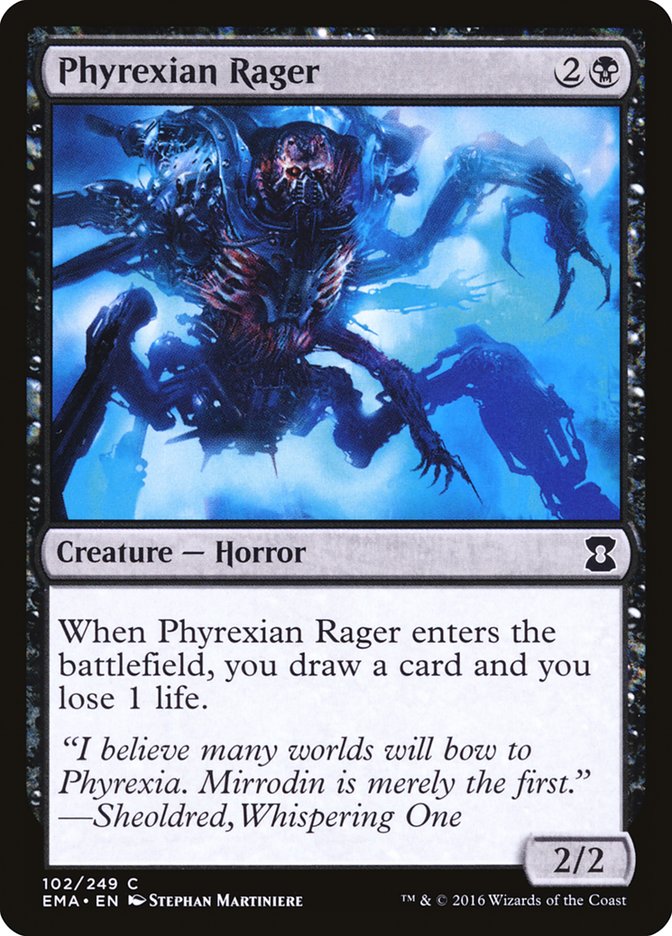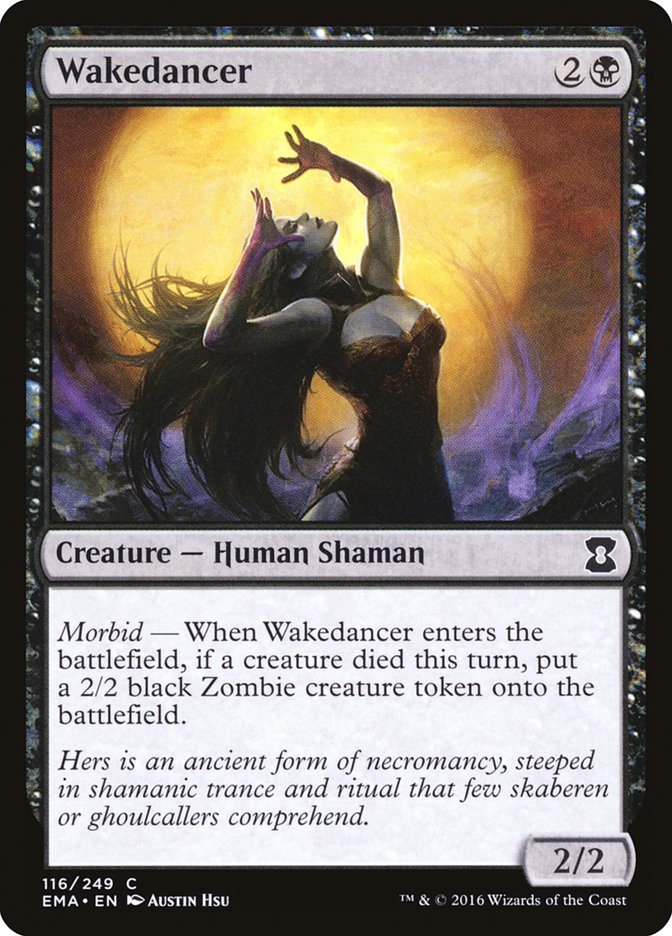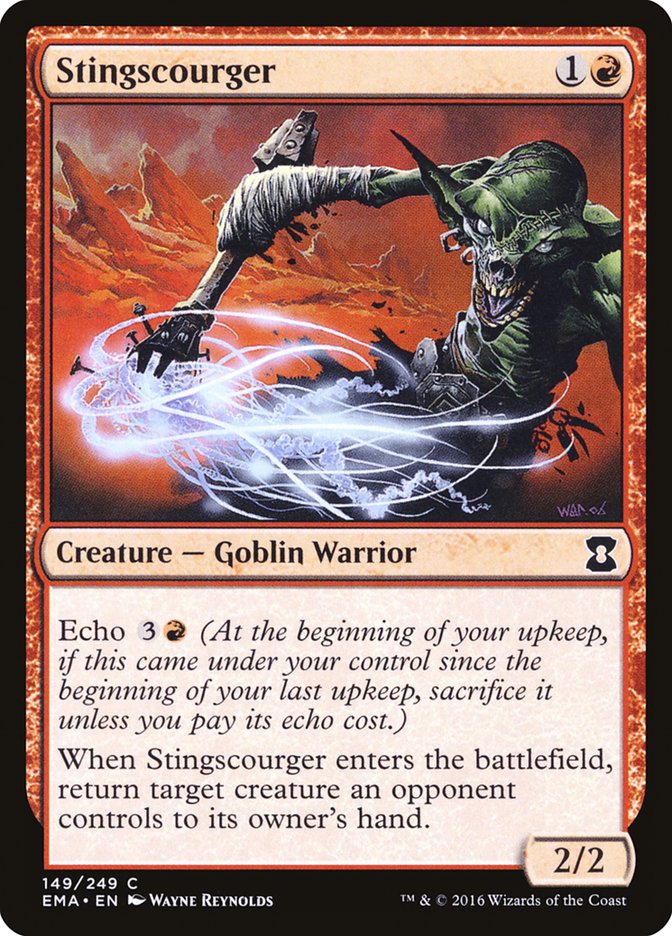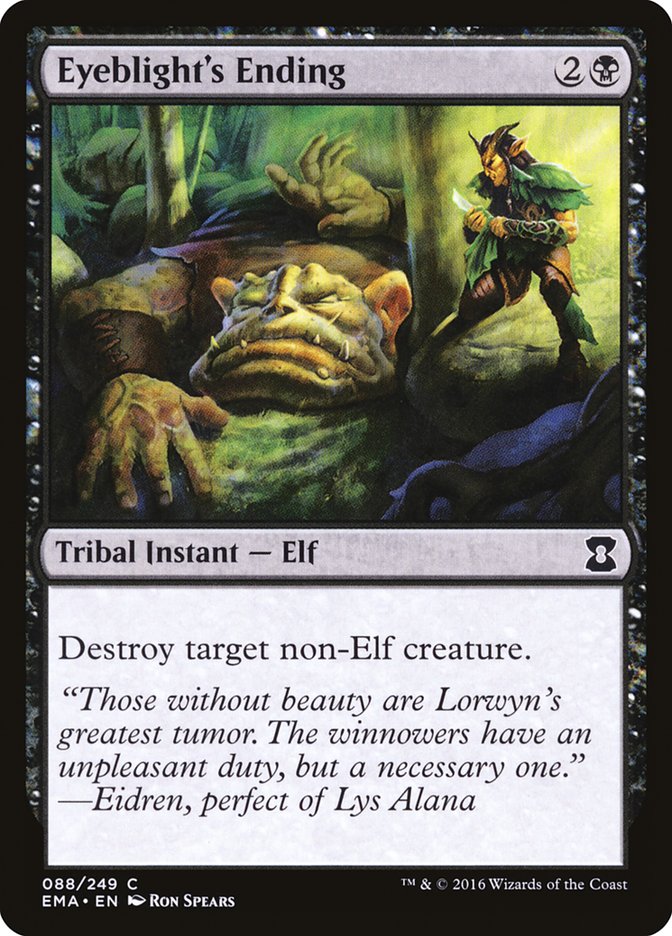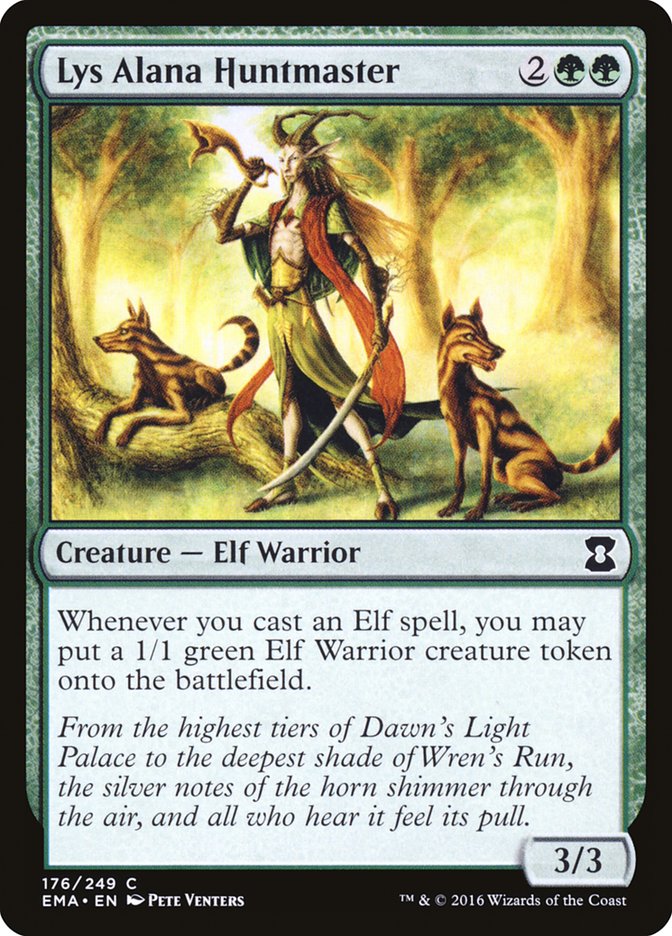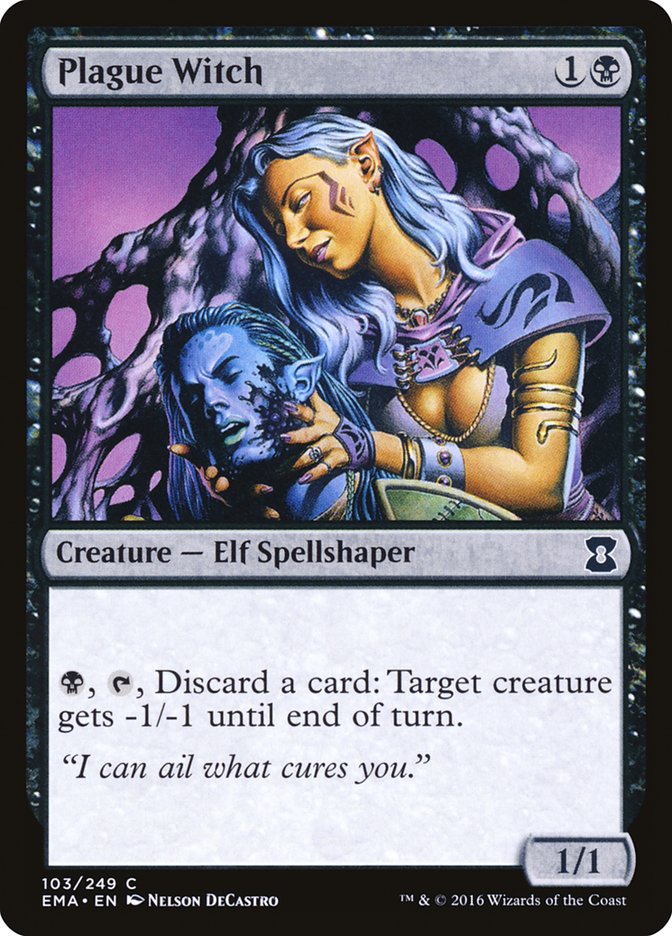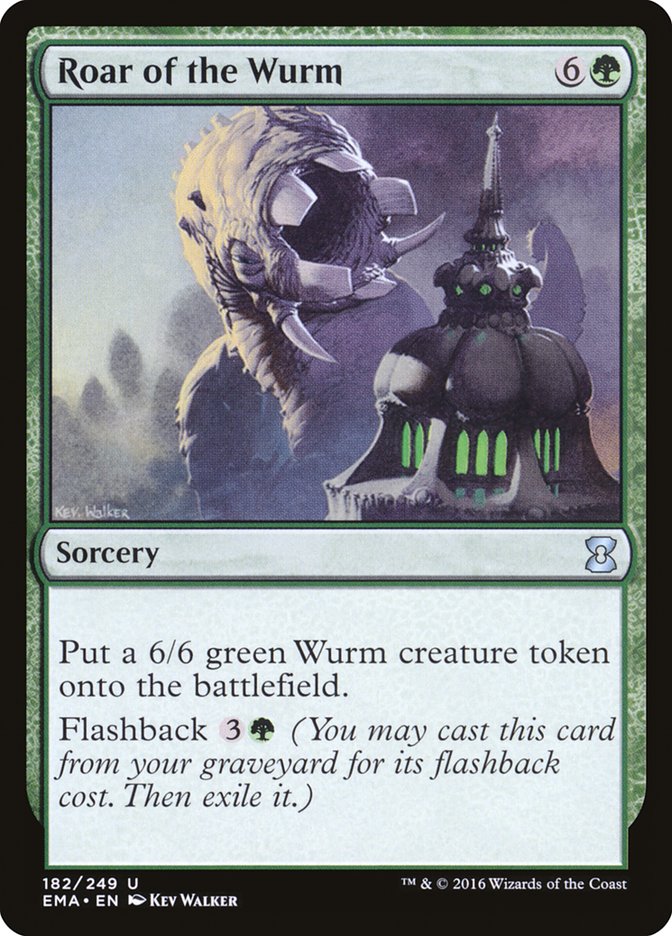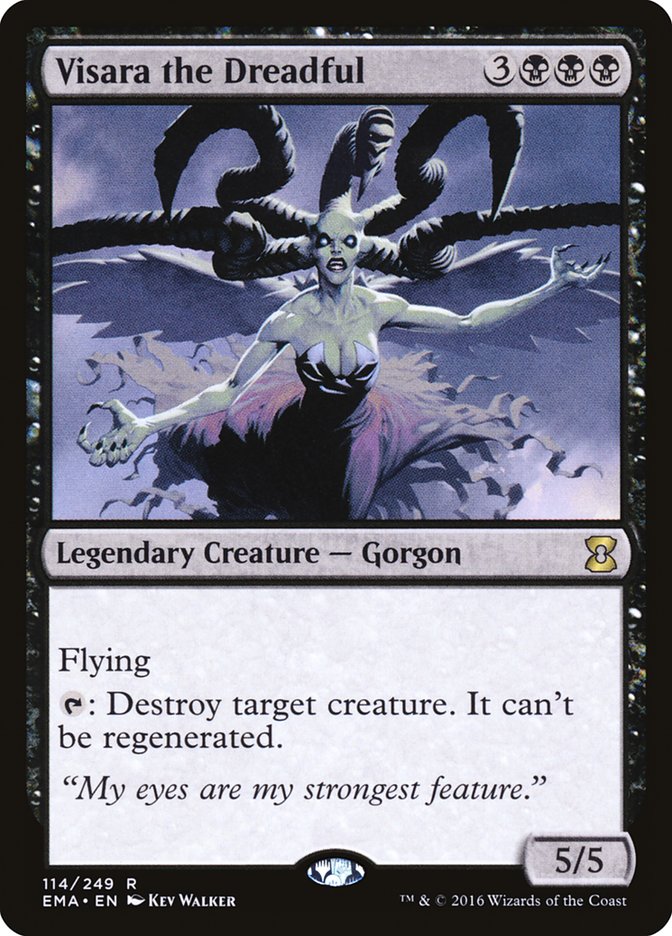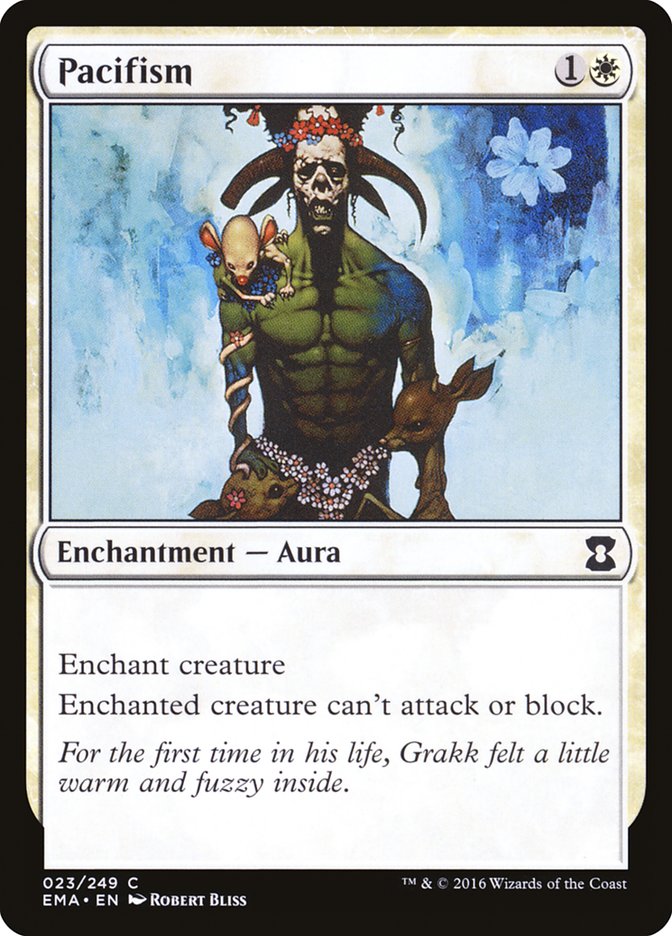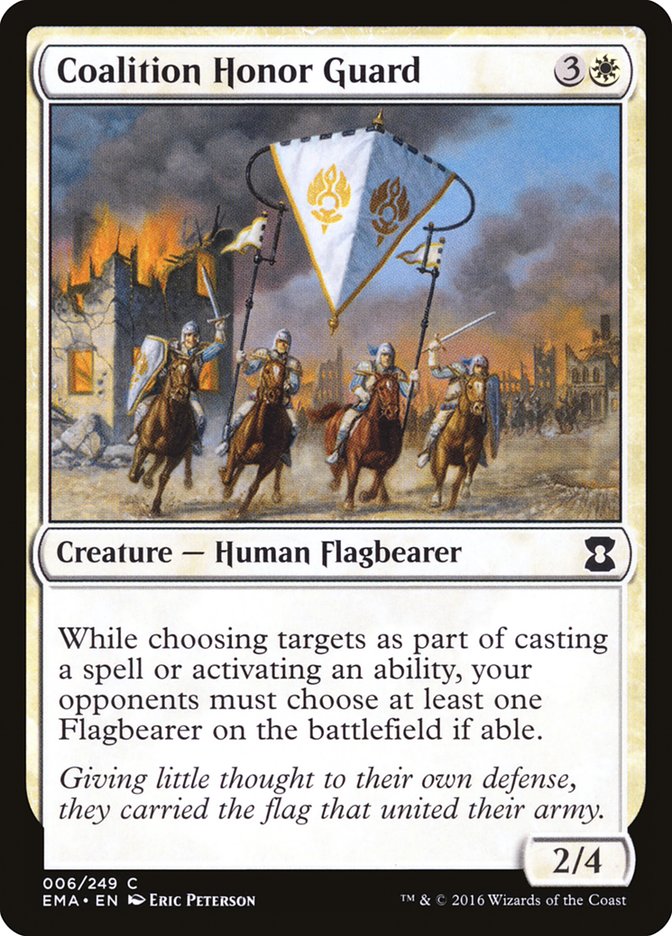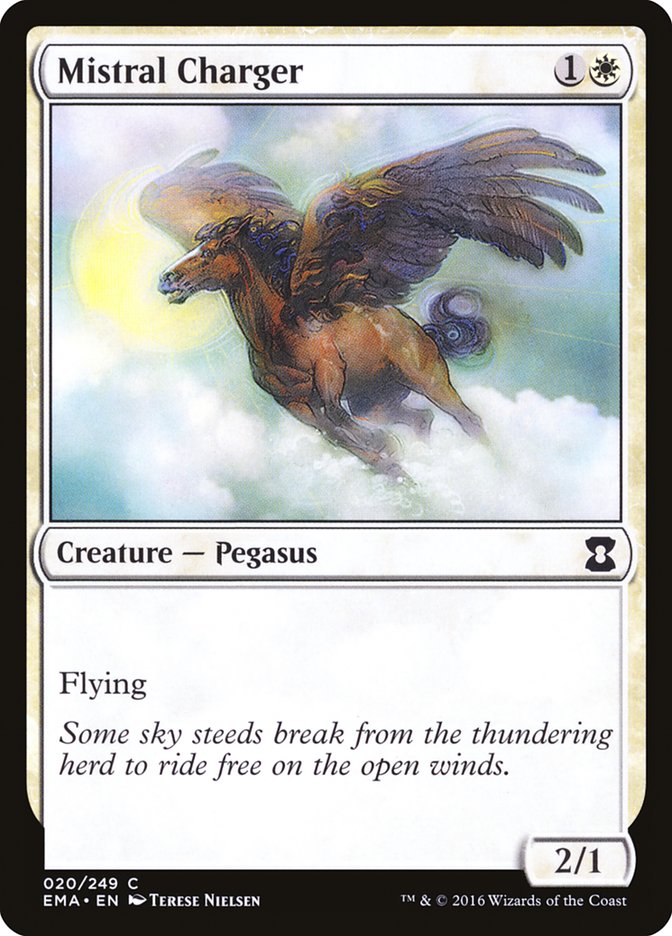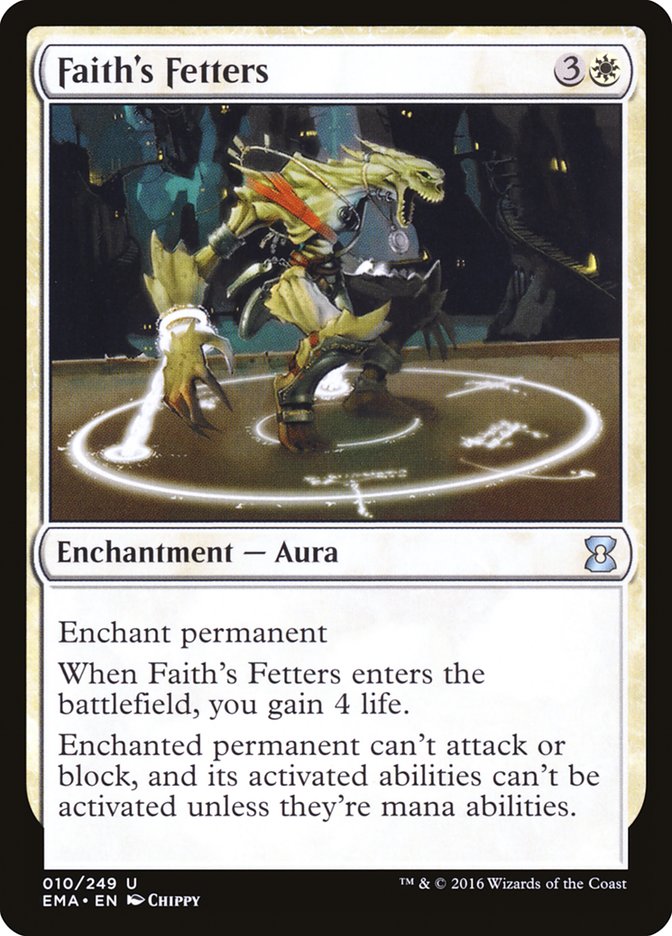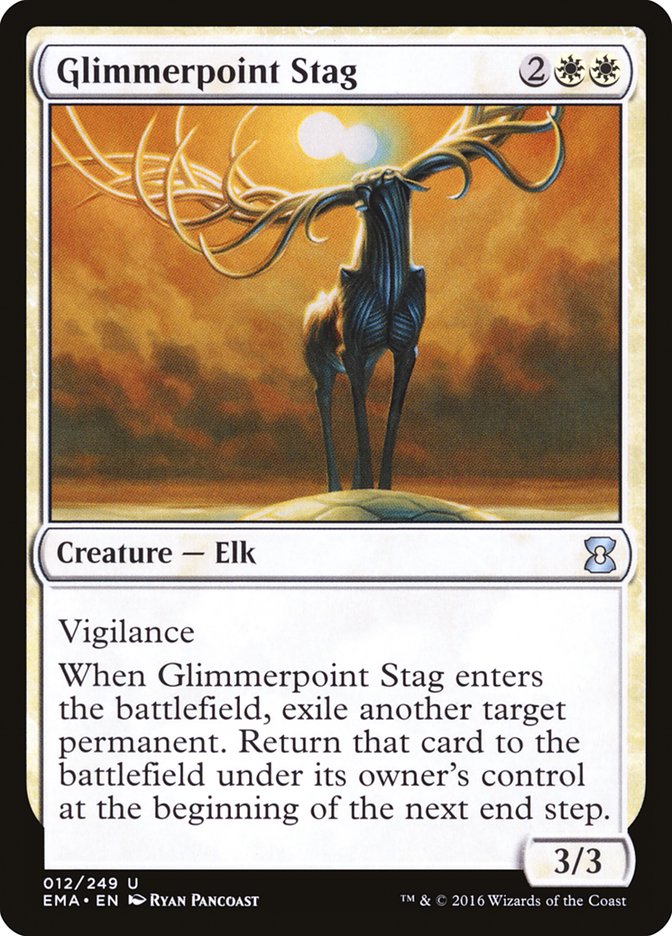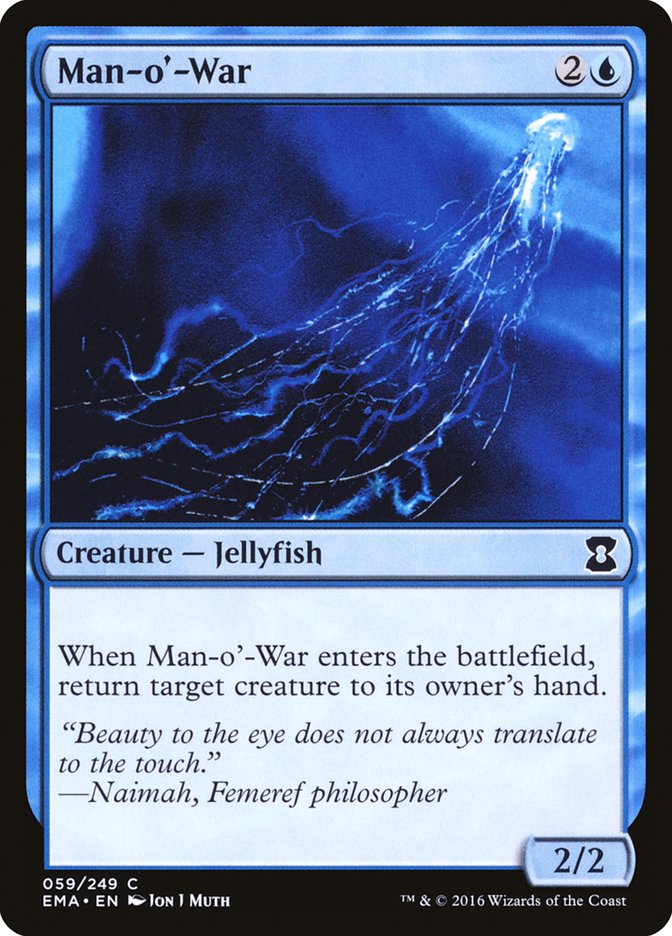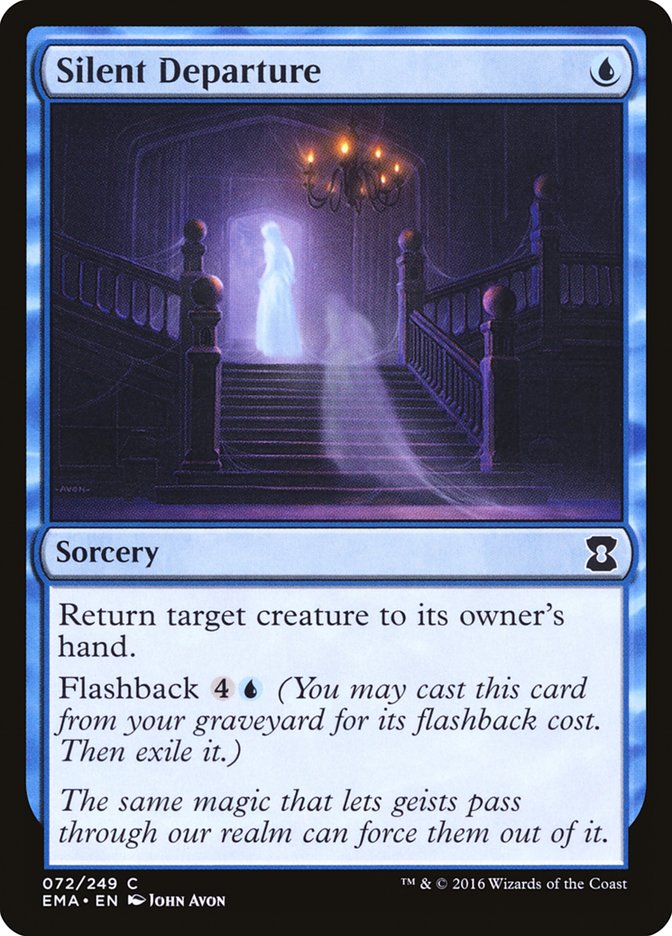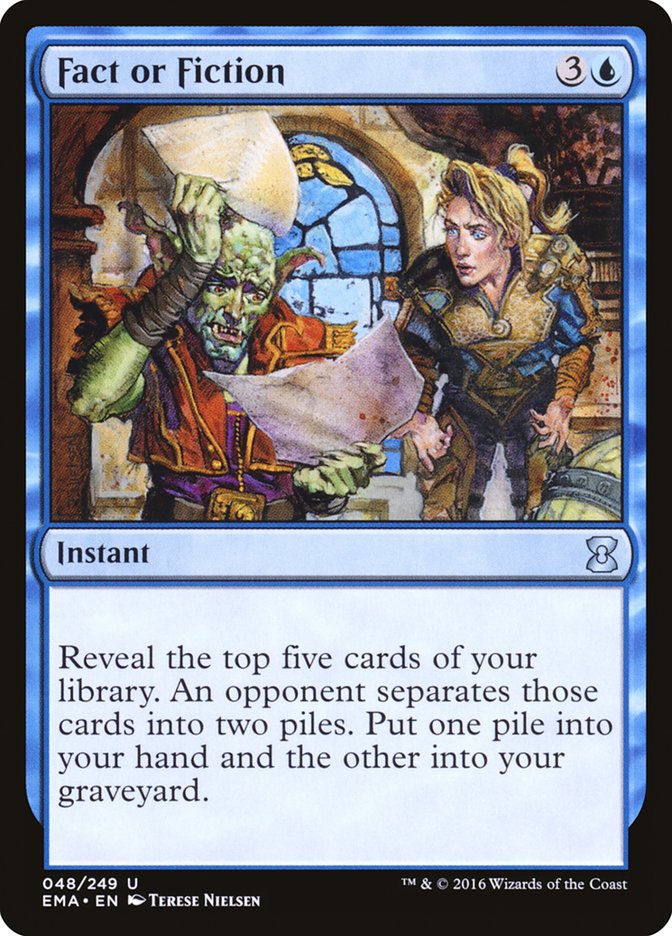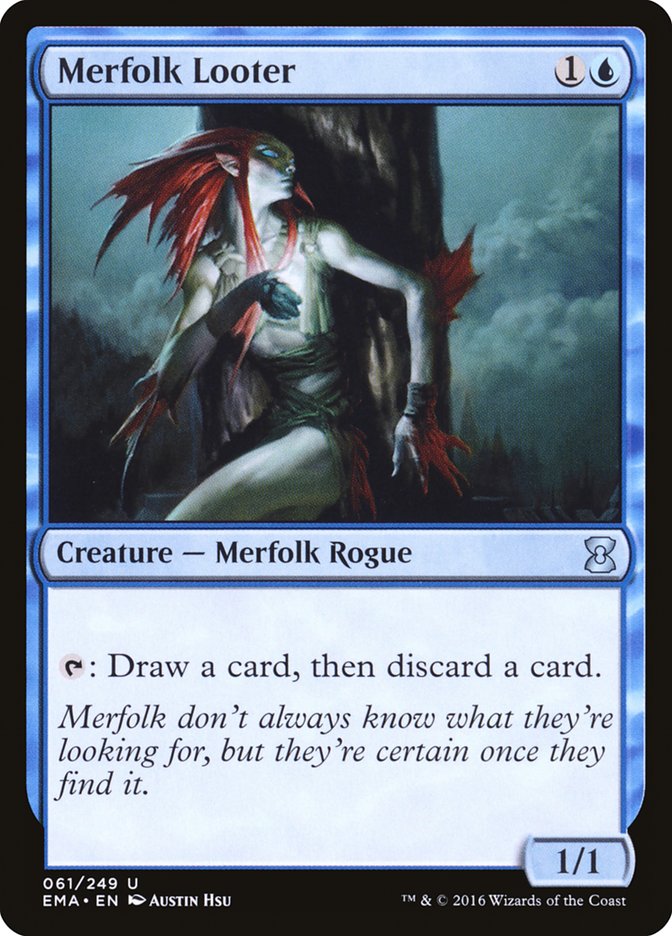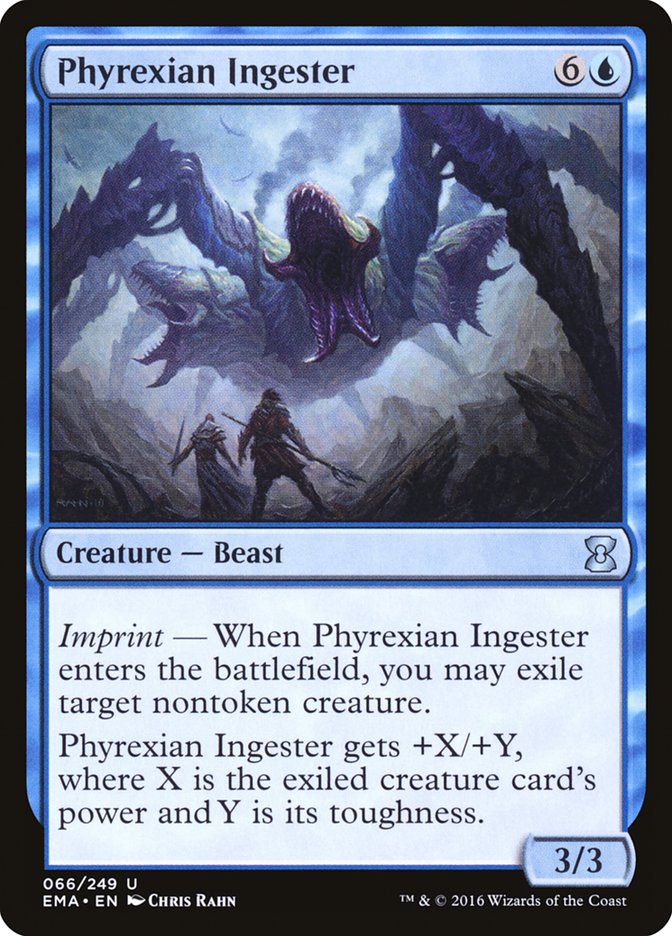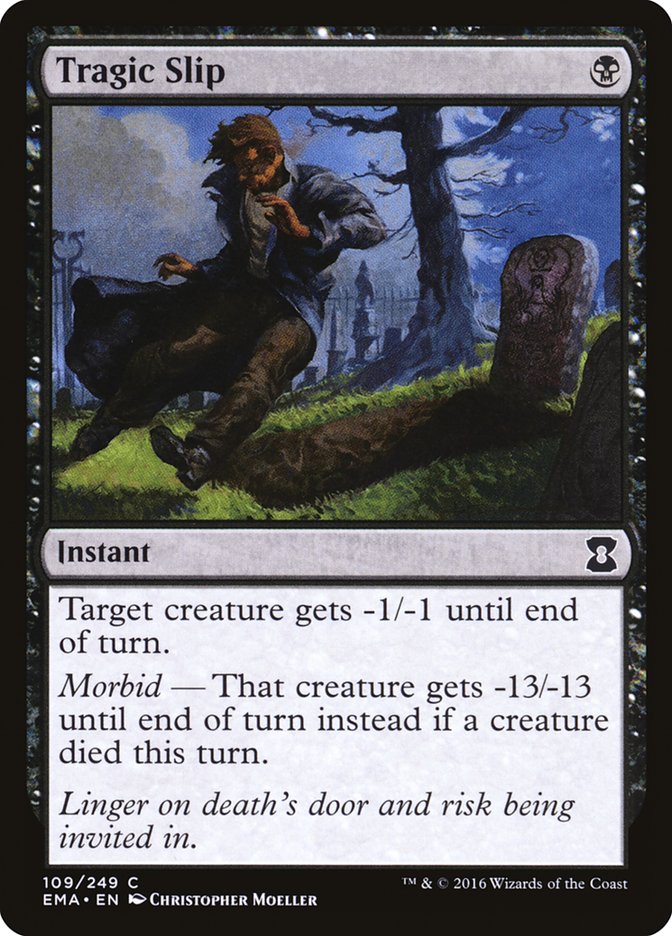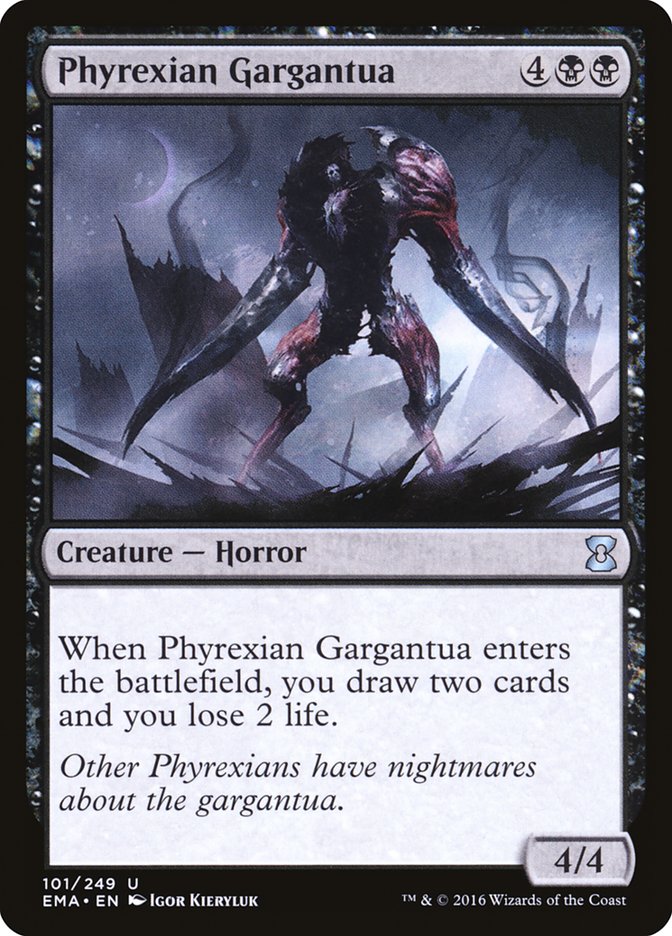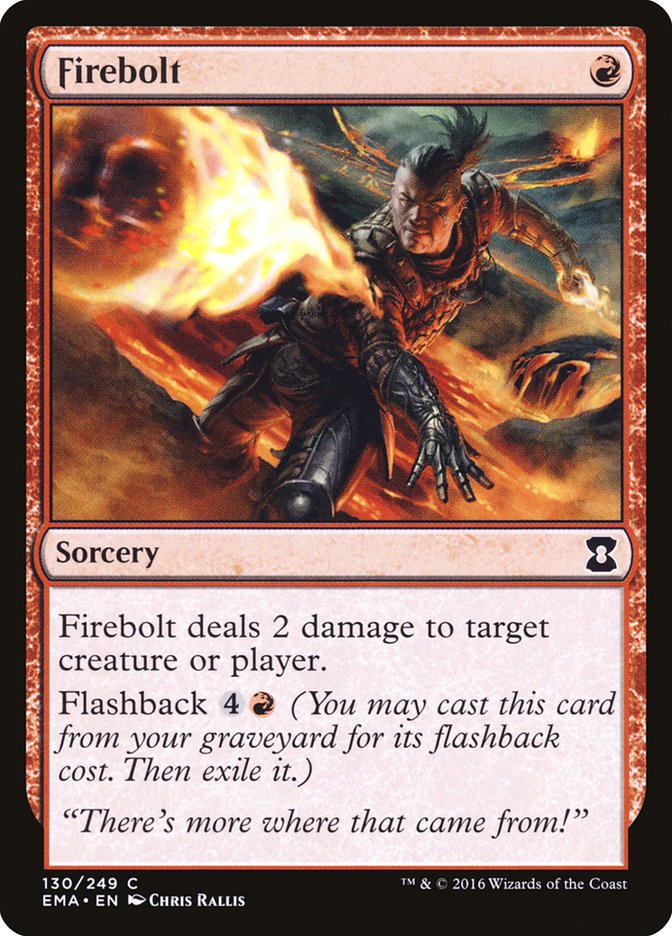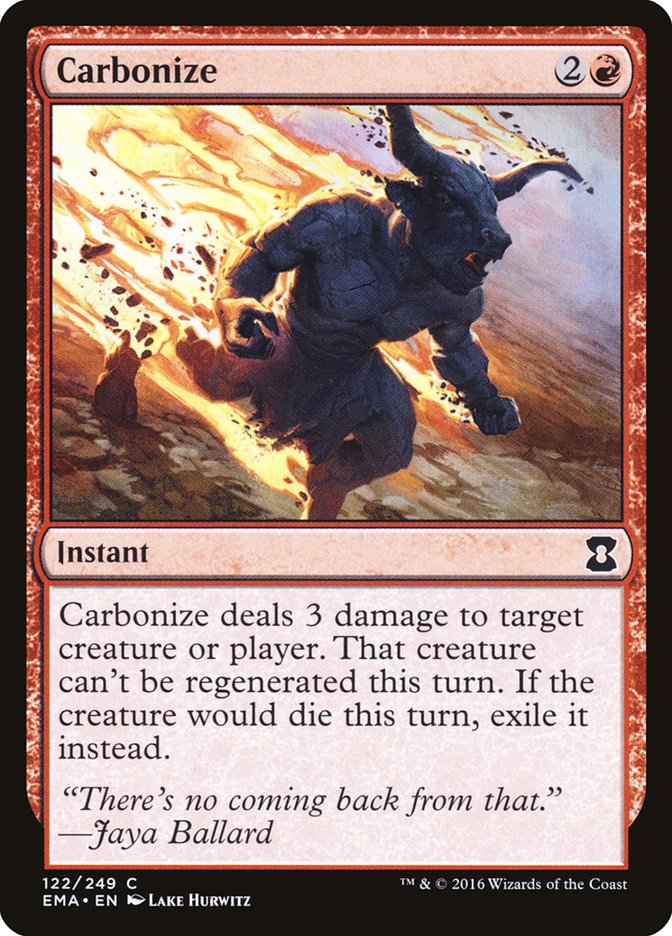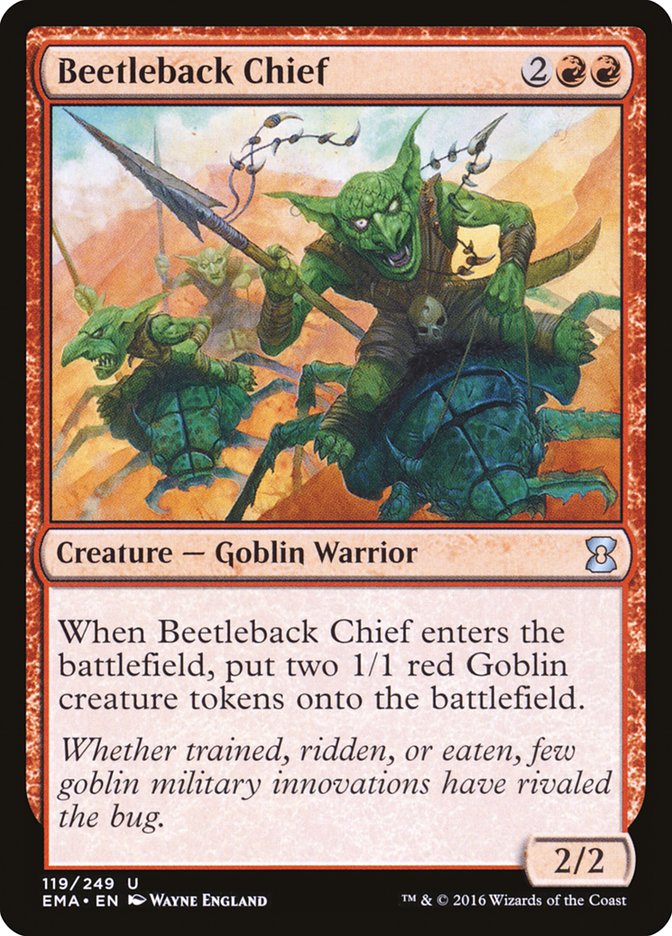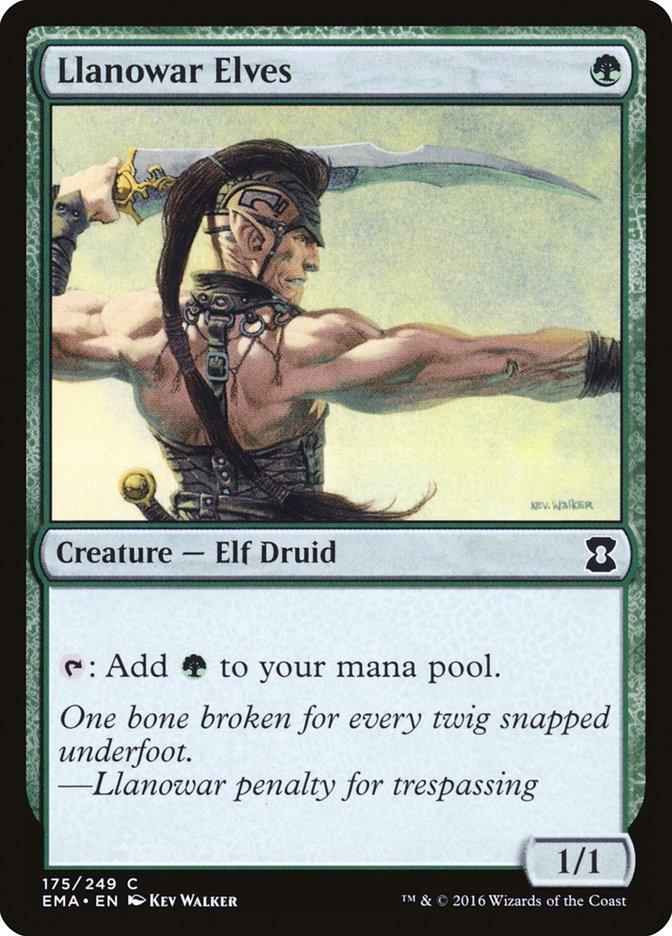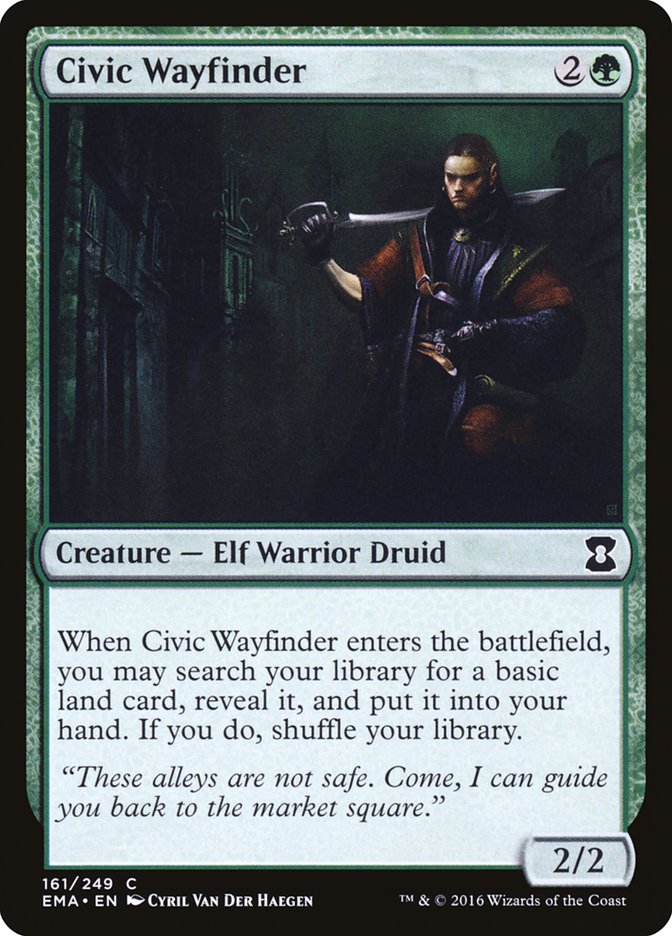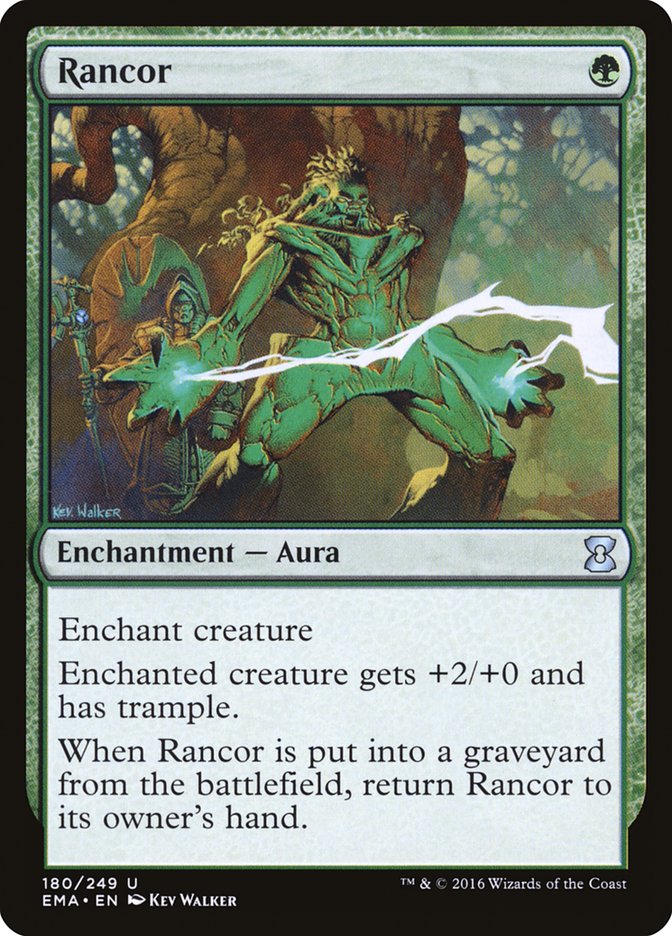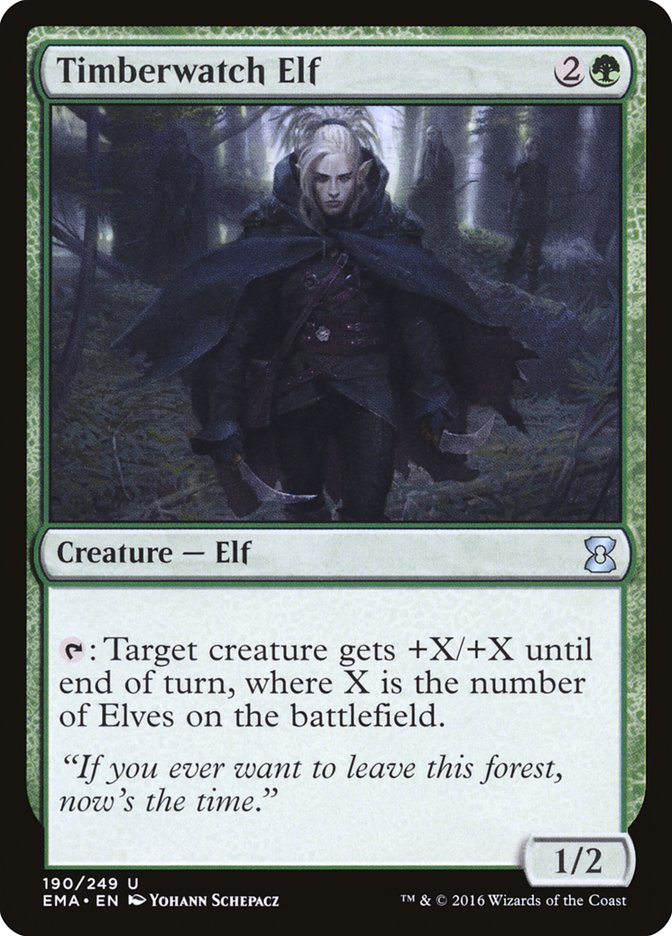While people around the world gathered to play Legacy in #GPPrague and #GPCOL, I got the opportunity to play some old-school Magic of my own. I was drafting Eternal Masters, of course. Nothing like playing some Casual Magic and sweating every pack you open to see if you cracked some money rare. No pressure, tons of fun. The addiction to collecting and the nostalgia of playing with old Magic cards makes sets like Eternal Masters make me feel like I did when I first began playing Magic: The Gathering approximately twenty years ago.
Not only were the cards coming back from another time, I got to catch up with a few players whom I hadn’t seen since these cards were released originally. This idea of old players coming back to play with older cards makes a lot of sense to me. I myself was someone who took a break from Magic, and when I came back, learning all of the new cards was a daunting task. Being so familiar with a lot of the cards makes the transition back into the game a lot easier.
I did a little research before my drafts by browsing the spoiler and even doing a few online simulation drafts to get a visual of cards in packs, which eases me into drafting myself. I like to get a feel for the format, and though a simulation isn’t ideal, it’s better than nothing. After that, it was off to my local game store, where I participated in three drafts.
I think it’s helpful to watch and learn about drafting itself. I also think it’s important to see what a good version of a deck looks like. Often, before Pro Tours, I will spew off Magic Online tickets just drafting a deck, building it, and then conceding the first round. I have spent a week or two learning the interactions of the format at this point; I just want to draft and see what the deck I’ve drafted looks like to get an idea of what certain archetypes need, so I know what to look for. For that purpose, I’ll show you the three Eternal Masters decks I’ve drafted, how I felt about them, and what is missing to improve upon them.
Let’s start.
Draft 1
I led my day off by opening a pack with what I considered two choices viable. Balance and Animate Dead were the only cards I was interested in drafting. Now, Balance is a great card with an irreplaceable effect, but white is extremely aggressive in this format, so it’s hard to get Balance to work. Animate Dead is an ideal card for a U/B reanimation strategy that is heavily pushed in this format. In my heart I wanted to take Animate Dead, but Balance is just too unique of a card to pass on, so I took the Balance to see if I could make it work.
Several picks later, I ended up locking in on a U/B Reanimator strategy.
All was not lost, however, because there are cards like Pilgrim’s Eye, Primastic Lens, and all of the common “gain lands” from Khans of Tarkir block to help facilitate a splash for a card like Balance.
My first deck looked like this:
Creatures (15)
- 1 Prodigal Sorcerer
- 1 Phantom Monster
- 2 Man-o'-War
- 1 Gravedigger
- 1 Wonder
- 2 Twisted Abomination
- 1 Mindless Automaton
- 2 Plague Witch
- 2 Phyrexian Rager
- 2 Screeching Skaab
Lands (17)
- 8 Swamp
- 7 Island
- 2 Tranquil Cove
Spells (8)

Note: I will only list on-color sideboard cards, or cards I would sideboard in reasonable situations.
I would say overall that this is a weaker U/B deck. I reluctantly call it a “Reanimator” deck, because its most obvious hole is that the only worthy reanimation targets are the pair of Twisted Abominations. Twisted Abomination is, however, the fallback plan of this archetype. If you don’t happen to get any rare or uncommon reanimation targets, then Twisted Abomination and Shoreline Ranger are always there for you.
Swampcycling a Twisted Abomination on turn 2 to follow up with a turn 3 Animate Dead is one of the reasons I think Animate Dead is a really high draft pick, more so than the other two spells that bring a creature from the graveyard to the battlefield listed here, Victimize and Extract from Darkness.
This is not a good example of a “Balance deck.” I think a good Balance deck would be a U/R Burning Vengeance deck splashing for Balance. Balance is much better in a controlling deck with enchantments and artifacts because Balance doesn’t count these cards towards any total. Balance is merely thrown in the deck because I have three “free” white sources of mana, and a few discard outlets for the situations it’s poor in, so I can get some other value out of it.
In games where you draw Balance in a deck like this, you basically need to play the game in a manner that you’re constantly trading off two cards for one or chump blocking until the game state is ideal for your Balance. Future Sight does a great job recovering us from such a game state. Without Future Sight, I likely don’t put Balance in this deck.
This U/B deck is missing two key elements to be a good U/B Reanimator deck. First is a solid reanimation target. Three reanimation spells give me a lot of redundancy for that effect, but as I stated before, Twisted Abomination is my only good card to return. Something along the lines of Havoc Demon, Inkwell Leviathan, or Sphinx of the Steel Wind would have rounded this deck out nicely, but sadly I never saw anything along those lines.
This deck needs removal desperately: Tragic Slip, Eyeblight’s Ending, or ideally a Nekrataal. Annihilate is my only spell that can outright kill a single creature, and Balance can sweep up the battlefield in some spots. I would like to have two or three more removal spells in this deck.
It’s nice to be able to kill your opponent’s big threats, but both Animate Dead and Extract from Darkness allow me to take creatures from my opponent’s graveyard as well as my own, making creature removal vastly more important in a deck with these two spells and very few ideal reanimation targets. In retrospect, maybe I should have maindecked Force of Will. It gave me an answer for a big threat I could reanimate. I likely should have played it over maindecking Balance.
I ended up going 1-1 with this deck. I defeated a very good U/R Burning Vengeance deck in Round 1 of the draft and lost to a very good W/R Rally the Peasants token deck in Round 2.
Sulfuric Vortex was impossible for my deck to race. The U/R Burning Vengeance match was really interesting in that it came down to me deploying all of my threats, only to have them annihilated by a Burning Vengeance combined with an Oona’s Grace while my opponent churned through his deck. I ended up still at a very high life total, as he needed to keep pace with my creature production, and eventually I was able to deck him with my own Oona’s Grace a turn before he was able to kill me with his Burning Vengeance.
The Burning Vengeance deck reminds me of the Lightning Rift decks from Vintage Masters, but a little less reliable because there is no Astral Slide type of card to add to the strategy. With decks like this that rely heavily on having a specific card like Burning Vengeance, I like to have some sort of redundancy to make sure my deck will function. We don’t get anything as good as Astral Slide as a complement in a Burning Vengeance deck this time around, so I think it is much too risky a proposition to move all in on without having multiple copies of Burning Vengeance. However, Burning Vengeance is really good with just a few Flashback spells and a copy or two of Oona’s Grace or Flame Jab, so you won’t necessarily have to be all in with Burning Vengeance. Burning Vengeance can just be a part of your deck instead of the focus of it.
Let’s move on to the next draft.
Draft 2
This draft, I drafted what I am very early considering the best archetype, B/R Value. I don’t have a good way to define the strategy of this deck other than just calling it “Value.” It’s a pile of removal spells and creatures with enters-the-battlefield effects. When I played with this deck, I never ran out of spells to cast because of all the value my cards were generating. Though I had cards like Crater Hellion and Call the Skybreaker, this deck can function really well with just commons and uncommons.
Here’s my deck:
Creatures (14)
- 1 Mogg Fanatic
- 1 Nekrataal
- 2 Gravedigger
- 2 Twisted Abomination
- 1 Ghitu Slinger
- 1 Crater Hellion
- 1 Plague Witch
- 2 Phyrexian Rager
- 1 Phyrexian Gargantua
- 2 Mogg War Marshal
Lands (17)
Spells (9)

I would give this specific deck an A- grade. This deck was excellent, and all it was truly missing was one or two hard removal spells such as Eyeblight’s Ending or Tragic Slip. At times I’d struggle with big fliers such as Serra Angel, so it would be nice to have some more clean answers to it.
All the pieces were here other than that, though. Gravedigger brought back Phyrexian Rager, Mogg War Marshal, and sometimes Nekrataal or Ghitu Slinger. Urborg Uprising is incredible in this deck. It acts as a “draw three” spell as your graveyard is usually filled with value creatures, further perpetuating how much value you get from this spell. I wouldn’t want to play too many, but I’d always play one in a deck like this.
Mogg War Marshal is one of the best red commons in my early rankings. It’s great in aggressive decks like R/W Tokens and also great in a deck like this that’s looking to go long. I won multiple games going wide with this deck curving Mogg War Marshal into Phyrexian Rager, not paying echo on the Mogg War Marshal. The following turn, I would bring back Mogg War Marshal with a Gravedigger and eventually close the game out with a Torrent of Souls bringing back the Mogg War Marshal a third time.
Torrent of Souls was unbelievable, and if you’re in this archetype, I wouldn’t hesitate to first-pick it. Alongside a cycled Twisted Abomination, Torrent of Souls has a high ceiling for damage pretty early in the game, as well as just being a reanimation spell for all of the value creatures in your graveyard.
A couple of commons I was missing from this specific deck were Wakedancer and Stingscourger, which both go along with the theme of creatures with enters-the-battlefield effects alongside Gravedigger and Urborg Uprising. Morbid is relatively easy to trigger in a deck like this because we can easily let our Mogg War Marshal die, or sacrifice a Mogg Fanatic, or have a removal spell. That’s why I like Tragic Slip in this deck and think Wakedancer is probably a pretty solid fit.
I ended up losing in the finals with this deck to a very good R/G Kird Ape aggro deck. Sylvan Might following up a turn 1 Kird Ape and turn 2 Keldon Marauders is a lot of damage, but that wasn’t the problem. The second draft in a row, I got finished off by a Sulfuric Vortex.
Draft 3
This draft, I ended up drafting Elves. Now, this wasn’t an archetype I was extremely excited to draft when looking at the spoiler, but I wanted to give it a try. I led off taking a Tragic Slip in a weak pack and then decided I’d move into Elves when I saw a second-pick Shaman of the Pack in another weak pack. I wanted to see if I could cut off all the Elves cards and end up with a reasonable deck. I wasn’t too happy with how my deck ended up, but I did 3-0 and the deck played better than it looked to me initially.
Here’s my final deck:
Creatures (17)
- 2 Gravedigger
- 1 Visara the Dreadful
- 3 Plague Witch
- 1 Civic Wayfinder
- 1 Giant Solifuge
- 2 Thornweald Archer
- 1 Lys Alana Huntmaster
- 1 Lys Alana Scarblade
- 1 Sentinel Spider
- 2 Deadbridge Shaman
- 2 Shaman of the Pack
Lands (17)
Spells (6)
Sideboard

Visara the Dreadful was the best card in my deck by a huge margin. That said, the rest of the deck didn’t really come together how I envisioned it. I wanted to get two or three Lys Alana Huntmaster and some copies of Llanowar Elves and Blightsoil Druid. Wirewood Symbiote would be a nice payoff for having a bunch of Elves in my deck with a couple of Shaman of the Pack. Unfortunately, I ended up only seeing a single copy of Blightsoil Druid and took the Visara the Dreadful out of that pack. I took the only Lys Alana Huntmaster I saw. In general, I would expect to get two or three Lys Alana Huntmaster if the archetype is open because it’s not really a card other decks want. I think there is some payoff for going Elves, specifically because the cards that want all Elves are really bad in decks of other archetypes. This makes it easier to get high-payoff cards in much later picks and potentially wheel some of the best cards in your deck.
My deck really only had the two Shaman of the Pack, Lys Alana Huntmaster, and Lys Alana Scarblade as payoffs for jamming a bunch of mediocre Elves in my deck. Lys Alana Scarblade was terrible. I only had eleven other Elf creatures and a single copy of Eyeblight’s Ending, but I don’t think it was an Elf density issue. The card is just too slow, too fragile, and only has one power for three mana, making it pretty bad on an empty battlefield. The fact you have to discard a spell makes cards like this worse than they may appear at first. I think Lys Alana Scarblade would be better if my deck had a few Llanowar Elves in it, because it would allow me to play Lys Alana Scarblade a turn earlier and discard my excess mana creatures later in the game for value.
Plague Witch did a good job to fill the curve with Elves, kill annoying small creatures, turn on morbid mode for Tragic Slip, and to discard my Roar of the Wurm. Plague Witch was a solid role player in this deck.
All in all, I’d grade this deck a B. I think I was lacking on enough playables for this deck, so I had to resort to cards like Sylvan Might and Commune with the Gods to fill it out; they aren’t cards this archetype would typically want, but can be played in a pinch. I was lacking enough quality Elves synergies. I had solid removal and a bomb in Visara the Dreadful, so I think the deck was above-average, but having Visara bailed me out.
When you draft a set like this, in real life especially, the value of the cards tends to warp picks for people. This means far more rares are being selected first-pick just for monetary value, so we need to be able to build a deck with just commons and uncommons, as we won’t get passed as many good rares in our colors.
Here’s my early list of what I think the best uncommons and commons are in each color. The context of your deck will change how highly you want to take certain cards, but these are cards I’d be starting my draft with at common and uncommon. Each group is in order, first, second, and third, from left to right.
White
Best Commons:
Best Uncommons:
Blue
Best Commons:
Best Uncommons:
Black
Best Commons:
Best Uncommons:
Red
Best Commons:
Best Uncommons:
Green
Best Commons:
Best Uncommons:
I had a lot more fun drafting Eternal Masters than I thought I would. After an initial glimpse at the spoiler, the set didn’t seem to live up to the expectation I had for it. I think my initial analysis was wrong. There’s enough going on in this set to make it sweet for everyone drafting it. The set has so many powerful cards and strategies that everyone can have a quality deck. Every game of this format is fun and interactive.
I highly suggest you give it a try if you’re a fan of drafting, or even just a fan of old-school Magic cards. In fact, after playing Eternal Masters drafts this weekend, I kind of want to use some of the sweet older cards I acquired to start building a Cube.
Happy drafting, everyone!



